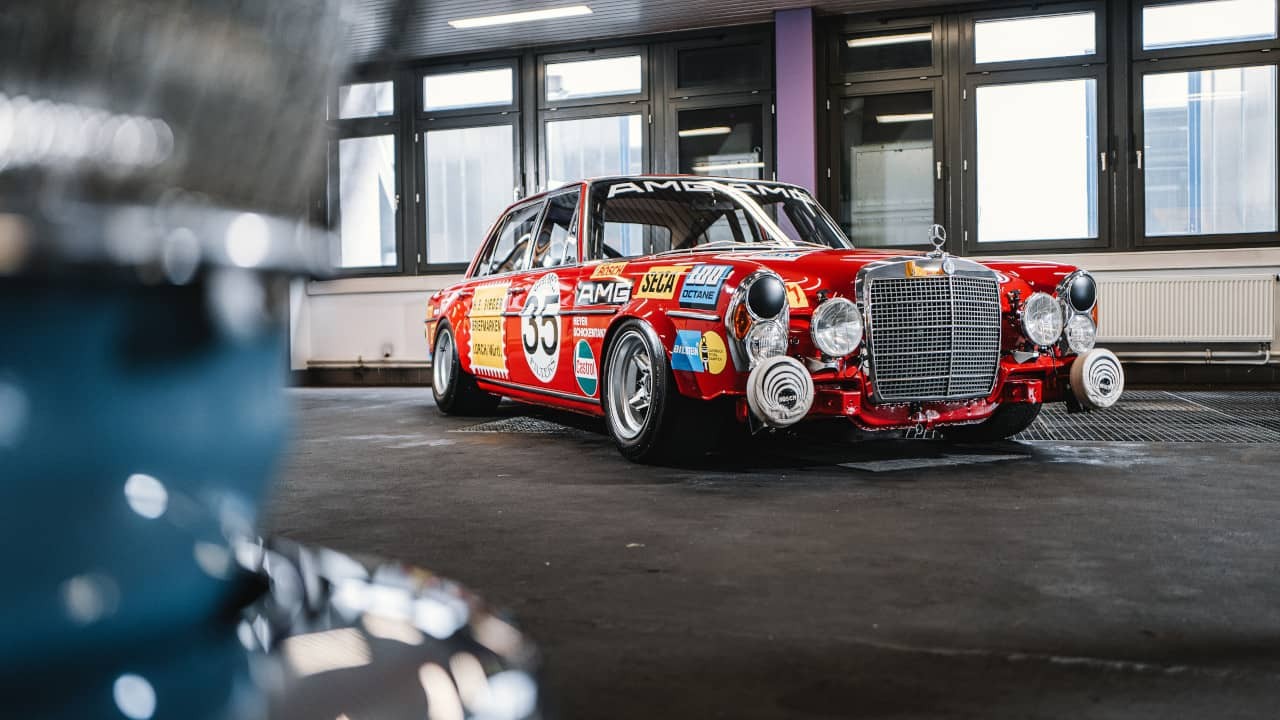Mercedes-AMG, often recognized simply as AMG, is the high-performance division of the renowned German automotive manufacturer, Mercedes-Benz. The acronym AMG stands for Aufrecht Melcher Großaspach, derived from the surnames of its founders, Hans Werner Aufrecht and Erhard Melcher, and Aufrecht’s birthplace, Großaspach. Established in 1967, AMG has evolved from an independent racing engine forge to Mercedes-Benz’s in-house powerhouse for exhilarating performance and driving dynamics.
While the AMG badge is globally synonymous with high performance, understanding its full significance can be insightful for automotive enthusiasts and potential Mercedes-Benz owners alike. This article delves into the essence of Mercedes-AMG, exploring its origins, the meaning behind the moniker, and what distinguishes an AMG model from its Mercedes-Benz counterparts.
The Genesis of Mercedes-AMG: From Racing Roots to Road Dominance
The story of Mercedes-AMG begins with a passion for motorsport and a desire to push the boundaries of automotive engineering. Following Daimler-Benz’s withdrawal from motorsports, two Daimler-Benz engineers, Hans Werner Aufrecht and Erhard Melcher, continued their dedication to performance tuning in their own time. Their focus was initially on the 300 SE racing engine, which they meticulously refined. In 1965, their engine achieved remarkable success, powering a car to ten victories in the German Touring Car Championship. This triumph laid the cornerstone for what would become Mercedes-AMG.
Driven by Aufrecht’s vision to translate motorsport pedigree to road vehicles, AMG began modifying standard Mercedes-Benz cars. The goal was to infuse them with racing-inspired performance and handling. AMG’s reputation as a premier engine manufacturer grew, eventually leading to a formal partnership with Daimler-Benz in the late 1980s. This collaboration deepened with a cooperation contract in 1990, marking the integration of AMG into the Mercedes-Benz family. Since then, Mercedes-AMG has been instrumental in crafting some of the most sought-after high-performance vehicles worldwide.
Decoding Mercedes-AMG: Performance, Power, and Prestige
As the dedicated performance arm of Mercedes-Benz, Mercedes-AMG represents the pinnacle of driving excitement within the brand. AMG vehicles are engineered to deliver superior power, enhanced responsiveness, and exhilarating driving dynamics compared to standard Mercedes-Benz models. This distinction is often achieved through larger, more potent engines, meticulously tuned suspensions, upgraded braking systems, and distinctive AMG styling cues both inside and out. When a Mercedes-Benz bears the AMG badge, it signifies a vehicle meticulously crafted for high-performance driving.
To broaden the appeal and accessibility of the AMG brand, Mercedes-Benz offers AMG Line and AMG Sport trims across various models. These trims provide a taste of the AMG experience by incorporating AMG-inspired styling elements, sporty interiors, and sometimes performance-oriented features. However, it’s important to note that AMG Line and AMG Sport models typically do not possess the full spectrum of performance enhancements found in ‘true’ AMG models. These top-tier AMG vehicles are characterized by their handcrafted engines built under the “one man, one engine” philosophy, ensuring ultimate performance and exclusivity.
In conclusion, Mercedes-AMG embodies a legacy of motorsport excellence and a relentless pursuit of high-performance automotive engineering within Mercedes-Benz. It represents more than just a trim level; it’s a commitment to delivering vehicles that offer an unparalleled driving experience, blending luxury with breathtaking power and agility. For those seeking the ultimate expression of Mercedes-Benz performance, AMG remains the definitive answer.
